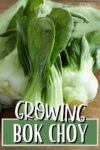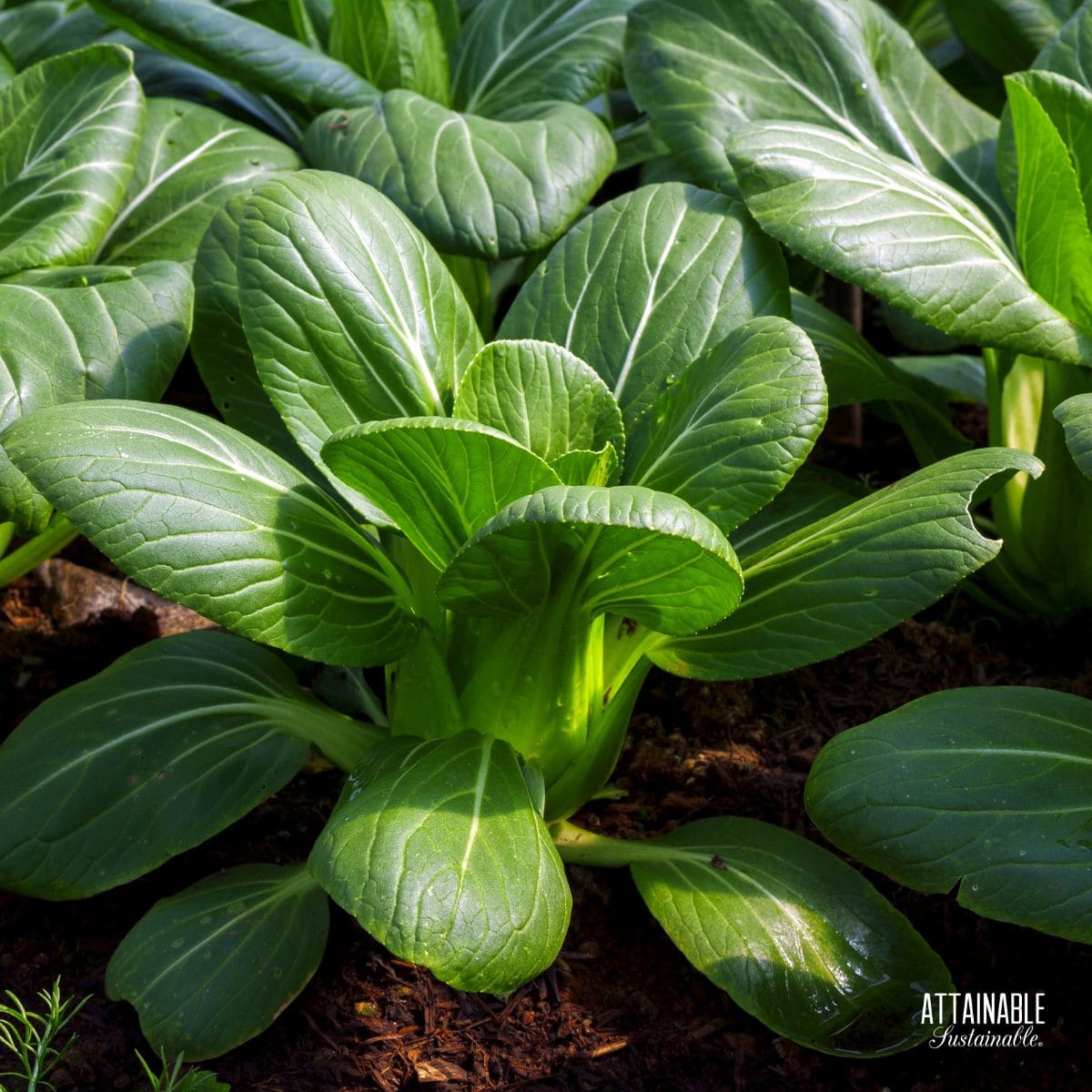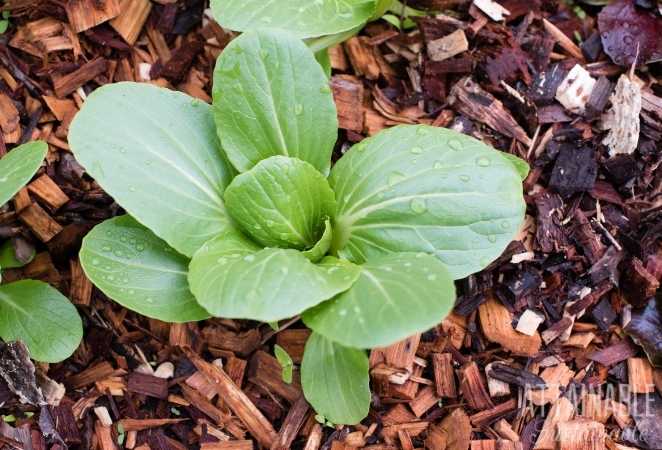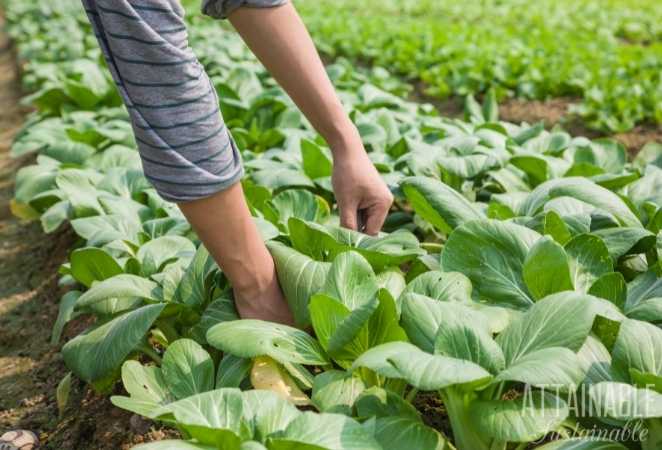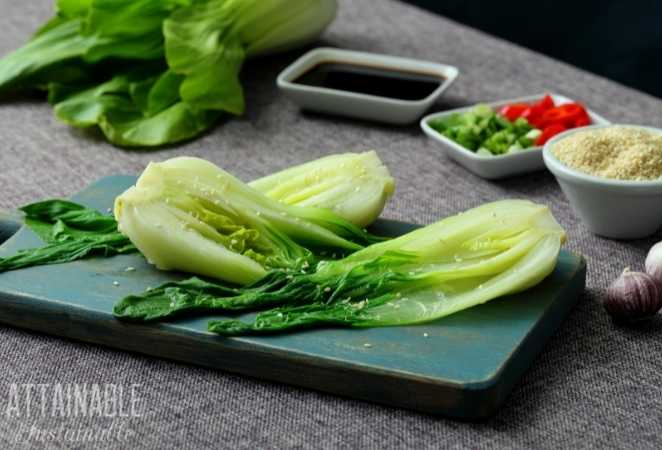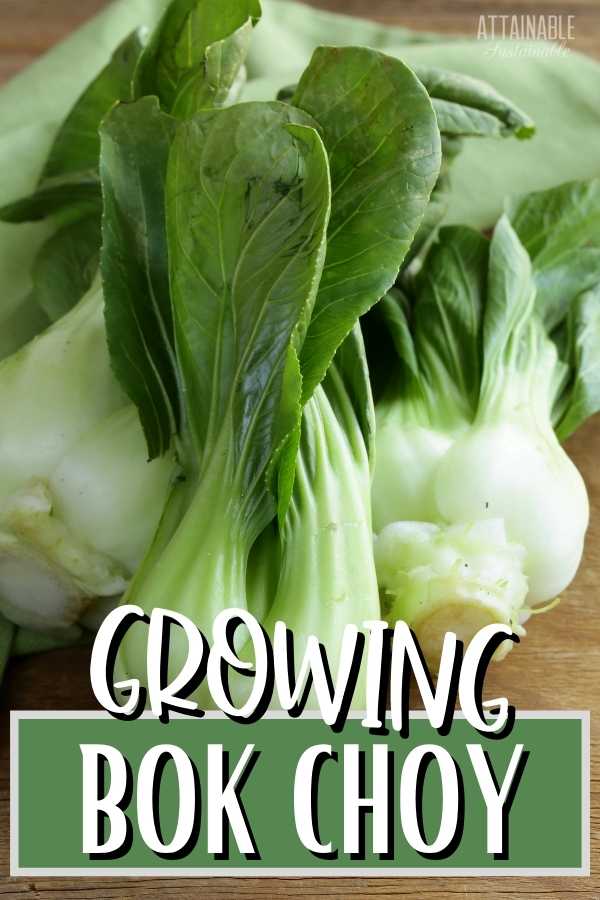Bok Choy is known by other names such as Chinese white cabbage, pak choy, pak choi, and white mustard cabbage. But no matter what you call it, bok choy (Brassica rapa Chinensis group) is an easy-to-grow vegetable that’s a must-have for a stir-fry garden.
Another great addition to your home stir-fry garden is celery.
All about bok choy
Related to Chinese cabbage (Brassica rapa Pekinensis group), bok choy’s dark tender leaves grow in bunches on white stalks. Its mild flavor makes bok choy a versatile vegetable to eat raw or prepare in Asian fusion recipes.
Bok choy is a cool-season vegetable that’s most often planted in cool spring weather, but can be planted when temperatures cool in fall.
Bok choy can be started from seed or purchased as transplants for faster growing. Match the days to harvest to your region for the best results. Some baby varieties can be harvested about 40 days from transplanting.
New to gardening? Limited on space? The 5-Gallon Garden gives you the skills you need to grow food in the space you have. Get started with your garden today!
Varieties for home gardens
Medium to Full-size varieties
Grow Some Greens!
Ready to grow fresh greens, no matter WHERE you live? Sign up for my
FREE quick-start guide and start growing some of your own food!
Suzhou is a medium-sized bok choy with good flavor and consistent heads of tightly packed leaves. A productive variety, it resists bolting about 12 inches tall, 45 days to maturity.
BoPak is an All-America Selections Vegetable Winner from 2015 because of its uniform nature and glossy green and white leaves; grows to 14 inches tall. Heads form early and resist bolting to grow to a mature size; 45 days from transplanting.
Violetta has purple leaves that grow on green stalks about 12 inches tall; 30 days to harvest as baby-sized or 50 days to grow to full size. (Head over here for even more fun purple vegetables to grow!)
Baby varieties
Baby Green Fortune, is a dwarf variety of bok choy that grows to just 6 inches tall and matures in about 45 days.
Ching-Chiang is a semi-dwarf bok choy variety with smooth, medium-green leaves. Because this variety can tolerate weather fluctuations, like heat, cold and rain, it makes a good choice for fall planting; 40 days to maturity.
Yuushou is a small-size green-stemmed bok choy known for its compact 8-inch height and being slow to bolt; 36 days to maturity.
Toy Choi is a hybrid, that grows tiny bunches of green leaves on white stalks; about 4-5 inches tall; 30 days.
How to plant bok choy
Bok choy can be planted from seeds or transplants. Wait to plant until the threat of frost has passed and soil temperatures are between 55-65 degrees. If bok choy is planted while weather is still cool (around 50 degrees), plants may bolt or go to seed prematurely.
A good planting tip is to keep planting every couple of weeks for successive harvests for both spring and fall crops.
Buy transplants or start seeds indoors 4-6 weeks before the last average frost date. When the weather has warmed, plant the transplants in the garden about 6-10 inches apart, depending on the bok choy variety (baby bok choy plants grow to only 6 inches tall), in rows at least 18 inches apart.
When planting from transplants, be sure to slowly acclimate plants to the outdoors. This hardening off will help reduce transplant shock that may cause plants to bolt suddenly.
If direct seeding in the garden, plant bok choy seeds about ¼ to ½ inch deep, about 1 inch apart. Rows need to be at least 18 inches apart. As plants start to grow, you’ll want to thin them to their 6 to 10-inch spacing. Keep the thinnings to use fresh in early spring salads.
A layer of organic mulch placed around plants will reduce weeds and help maintain soil moisture.
Requirements for growing bok choy
Light Requirements
If your area is prone to hot summers, locate the planting bed in a partial-sunny spot. A little shade during summer will help keep plants from going to seed before they’ve matured and are ready to harvest.
Planting in a bit of shade also helps when planting a fall crop when midsummer temperatures are still high.
Soil Requirements
Amend the soil so it’s high in organic matter, loose and well-draining. Plan for regular watering with either drip irrigation or a soaker hose setup.
Water and Fertilizer Requirements
Keep up good watering so soil stays moist, but not soggy-wet. If the soil was amended before planting, plants may not need additional fertilizer; however you can add a well-balanced fertilizer to give plants a boost after thinning.
Pests and Other Problems
After planting, use floating row cover cloth to protect the leaves from insects, like flea beetles, cabbageworms and aphids. Be sure cover cloth is securely tied down so insects can’t find their way inside.
Small pests can ruin a crop of bok choy by chewing or sucking leaves that make them unattractive to use in cooking.
Remove any worms you find, especially on the inside of tightly packed leaves. Aphids can be washed away with a strong stream of water from the garden hose. Keep up the applications until aphids are gone.
Bok choy is a plant that is prone to bolting, so protect plants from extraordinary cold, too much heat or sunshine, and drying out.
How to grow bok choy in containers
Growing bok choy in elevated containers might be a good solution to avoid flea beetle infestations because they typically don’t reach any higher than about 14 inches. Plant in a large enough container, at least 12 inches across and fill with a good quality potting soil, not garden soil.
It’s a good idea to plant baby varieties of bok choy because smaller varieties grow well in a container, mature quickly and are easier to harvest.
How to harvest your crop
Harvest bok choy plants before the weather turns hot. If plants start to go to seed early, harvest right away before the leaves turn bitter.
The leaves can be cut from the outer layers while stems are still small and tender or wait for the plant to grow to about 8-12 inches tall and use a sharp knife to cut at soil level.
Ideas for using bok choy in the kitchen
Plan to use both the leaves and leafy stems in your cooking. Wash and store leaves in an airtight container in the refrigerator and use as soon as possible. Tear fresh leaves into green salads, chop and add to stir fry dishes, grill or roast, steam to serve as a vegetable side dish and add greens to soups. You could even try this easy kimchi recipe!
The bright white crunchy stalks make a crisp alternative to celery sticks.
Propagating these delicious greens
A fun project is to regrow your bok choy from its stalk in water. Cut off and save the celery-like base from one bok choy plant, place it in a shallow container of water and set it in a sunny window.
Check it daily to make sure there’s enough water to cover the base and change the water every few days.
In about 7-10 days, new bok choy leaves will start to grow from the center of the base. You can cut and use the leave or replant the entire base in a container of potting soil to get ready to transplant into the garden.
Originally published July 2021; this post has been updated.
